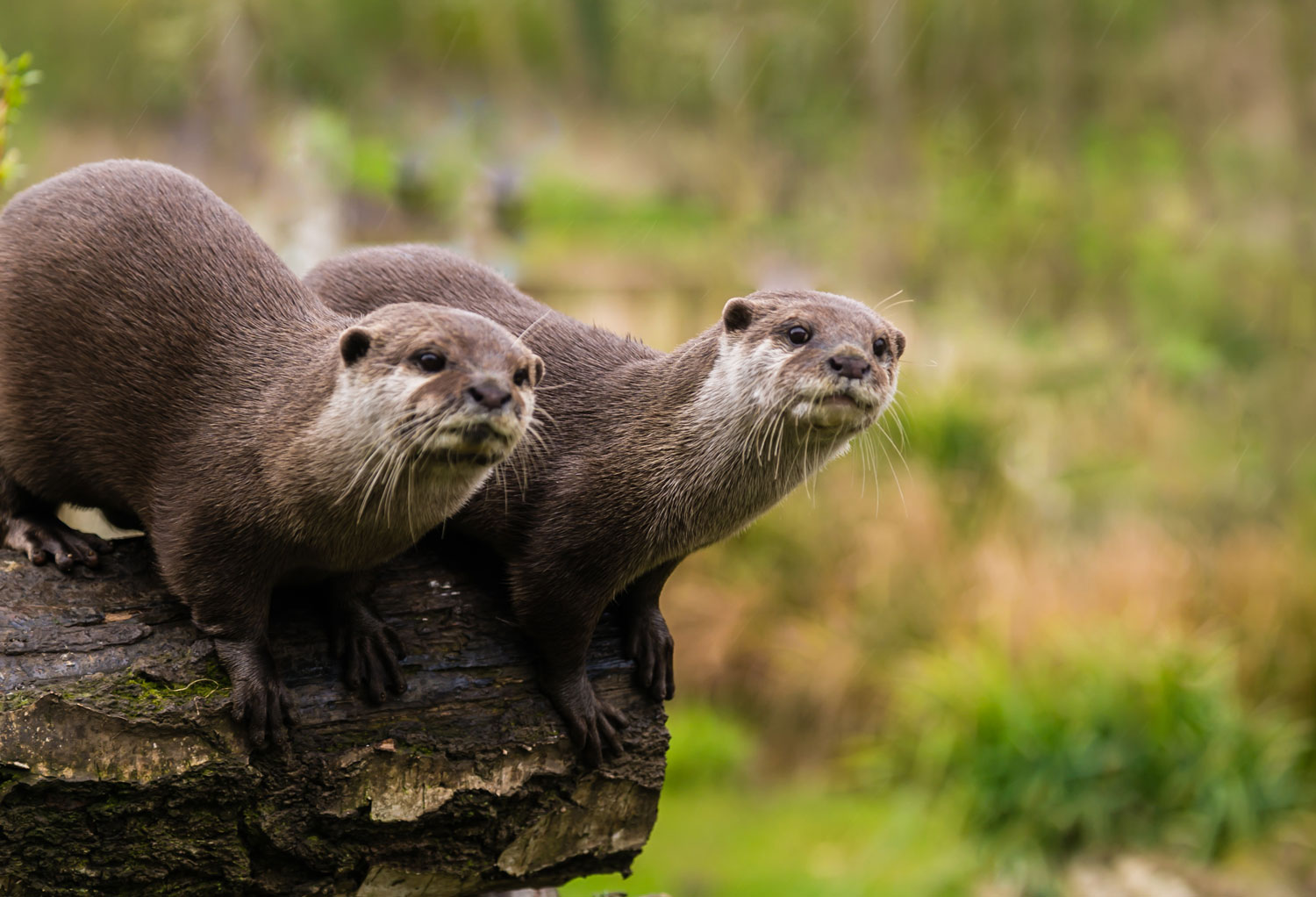
In the enchanting world of rivers and streams, a captivating creature roams the water: the river otter. With their sleek bodies, playful demeanor, and remarkable adaptations, these semi-aquatic mammals have captured the hearts of nature enthusiasts around the globe. Join us on an exploration of their incredible adaptations and discover how they have become true masters of the aquatic realm.
Behavior
River otters are highly social animals that live in groups called “rafts”. These groups can range in size from a few individuals to as many as 20 or more. They are also very active, spending much of their time hunting and playing in the water. River otters are known for their playful behavior, often seen sliding down muddy banks or chasing each other around in the water. They are also very vocal animals, communicating with a range of different calls, including barks, whistles, and chirps.

Habitat
River otters are found in a wide range of habitats, including rivers, lakes, swamps, and coastal areas. They prefer freshwater environments, but can live in saltwater habitats such as estuaries and bays. They are also well adapted to life on land. We’re lucky enough to have them living in the French Broad River as well.
Diet
River otters are carnivores and primarily feed on fish, but they will also eat other aquatic creatures such as crayfish, frogs, and turtles. They are opportunistic feeders, meaning they will eat whatever is available, and are known to have a voracious appetite. River otters are skilled hunters, using their sharp teeth and powerful jaws to catch and eat their prey.
Adaptations
- Streamlined Bodies for Effortless Swimming: One of the most striking features of river otters is their streamlined bodies, perfectly designed for swift and agile movements in the water. Their long, slender shape reduces drag, allowing them to glide effortlessly through the currents. With powerful tails and webbed feet, these agile swimmers can navigate swiftly, making them formidable hunters in their aquatic habitats.
- Incredible Breath-holding Abilities: Another incredible adaptation is their ability to hold their breath for an impressive duration. These skilled divers can remain submerged for up to eight minutes, allowing them to explore their underwater domain with ease. This remarkable breath-holding capacity enables them to hunt efficiently, navigate through complex underwater environments, and stay hidden from potential predators.
- A Fur Coat that Defies the Chill: Living in cold-water environments, river otters possess a unique adaptation – a thick, water-repellent fur coat. Their fur consists of two layers: a dense undercoat for insulation and longer guard hairs on the surface to repel water. This extraordinary combination keeps the otters dry and warm, even in icy waters, providing them with essential protection against the elements.
- Playful Paws and Whiskers: River otters’ paws are a wonder of adaptability. Equipped with partially webbed toes, they have excellent dexterity for manipulating objects, catching prey, and grooming their fur. Their sensitive whiskers, known as vibrissae, aid in locating prey by detecting vibrations and changes in water currents. These specialized adaptations make river otters highly skilled predators, able to snatch fish with precision and navigate their environment with finesse.
- Acute Senses for Survival: Survival in the water requires keen senses, and river otters possess remarkable visual and auditory abilities. Their eyes have adapted to see both underwater and on land, allowing them to hunt effectively in both domains. Furthermore, their ears and nose are equipped to detect subtle sounds and scents, enabling them to locate prey, communicate with other otters, and navigate through their watery realm.
- Social Bonds and Cooperative Living: River otters are known for their playful nature and strong social bonds. They form family groups, often consisting of an adult breeding pair and their offspring. These otter families work together to hunt, protect their territory, and care for their young. By living in close-knit groups, otters increase their chances of survival, creating a supportive and cooperative community.
Conservation
River otters are considered to be a species of “least concern” by the International Union for Conservation of Nature (IUCN). However, they were once endangered in many parts of North America due to habitat loss, pollution, and hunting. Thanks to conservation efforts, their populations have rebounded in many areas, and they are now found in most states in the US.


River otters exemplify the beauty of nature’s adaptations. Their streamlined bodies, insulating fur, dexterous paws, and acute senses have allowed them to conquer the aquatic realm. As we delve deeper into the world of these enchanting creatures, we gain a profound appreciation for their remarkable abilities and the delicate balance they maintain in their watery habitats. So, let us celebrate these fascinating creatures, the true masters of the aquatic realm.
